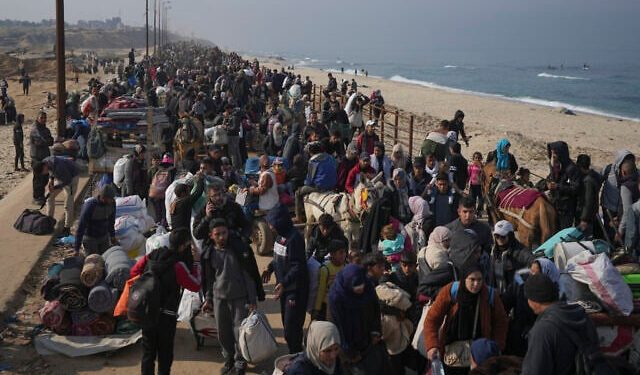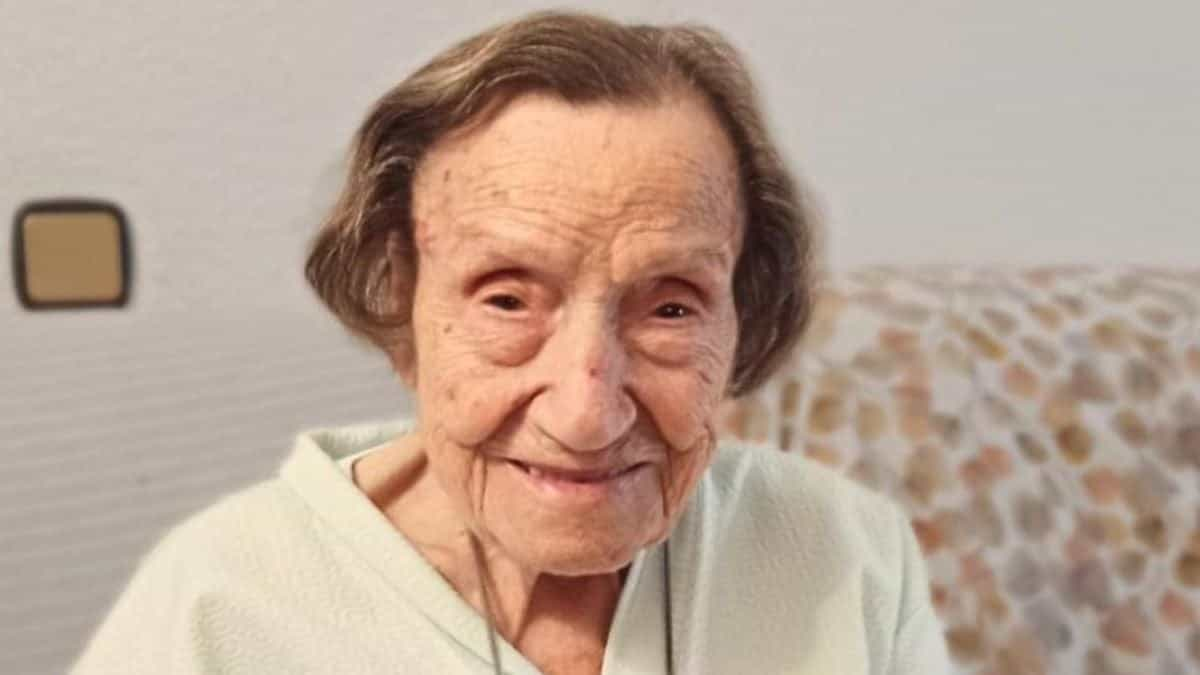The joy of thousands of Palestinian families who returned home to northern Gaza in the middle of the ceasefire between Hamas and Israel are transformed while the cold reality of uninhabitable and bombed houses and disastrous shortages of basic supplies settle down.
Many have started to complain about a lack of running water which forces them to line up for hours to fill plastic containers to drink or clean. With most houses now lots of rubble with regard to the eye, returnees have traveled all the useful elements of their property to erect makeshift tents.
At night, the residential districts put to waste by Israeli air strikes and bombing during fights with Hamas sink into the darkness for lack of electricity or fuel to operate rescue generators.
“There is nothing, no life, no water, no food, no drink, nothing to live. Life is very, very difficult. There is no Jabalia camp, “said Hisham El-Err on Wednesday, standing from the ruins of his house on several floors in the largest and mainly populated by the eight historic refugee camps of the Gaza Strip.
His extended family now huddles in tents, which offer radical protection against the cold of Gaza in the middle of winter.
The authorization of displaced gas to return to the north of the enclave was a key demand from Hamas in the ceasefire which interrupted the fifteen month war, it started on October 7, 2023, when it led Thousands of terrorists to invade southern Israel, killing 1,200 people and kidnapped 251 who were taken hostage. The South Gaza movement in the north began to be authorized on Monday.
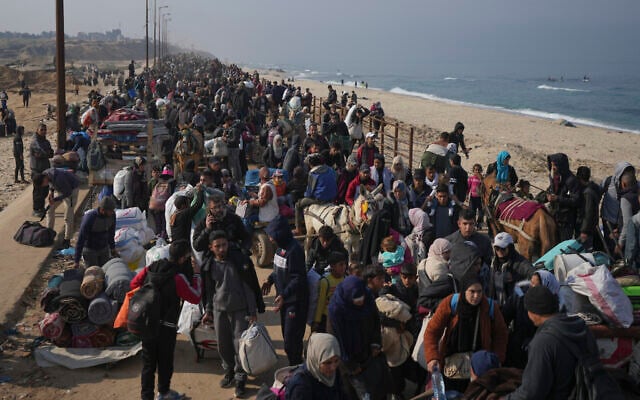
The displaced Palestinians walk on a road to return home in the Northern Gaza Strip, January 28, 2025. (AP photo / Abdel Kareem Hana)
Until the end of Tuesday, the authorities of Hamas in Gaza declared that most of the 650,000 people displaced from the north by the war had returned to the city of Gaza and the northern edge of the zones in the south where the fights were less intense and destructive.
Many of those who come back, often responsible for the personal property they still had after shaking while the battlefields moved, had traveled 20 kilometers (12 miles) or more along the coastal road.
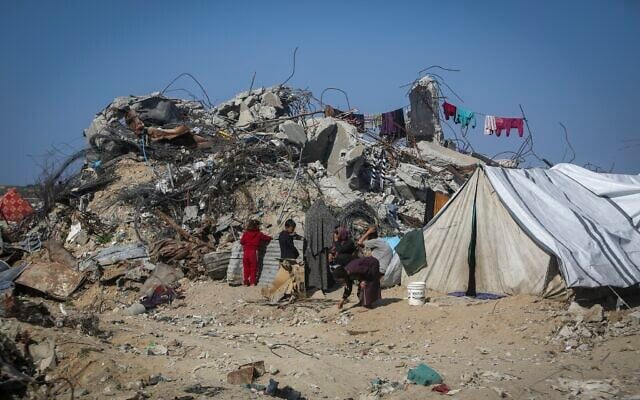
A Palestinian family is outside a tent next to their house destroyed in Beit Lahia, Northern Gaza Strip, January 29, 2025. (Jehad Alshrafi / AP)
Fahad Abu Jalhoum returned with his family to Jabalia from the Al-Mawasi region in southern Gaza, but the destruction they found was so omnipresent that they had been forced to return to the south.
“These are just soulless ghosts (in the North),” Abu Jalhoum told Reuters in Al Mawasi. “We all missed the north, but when I went there, I was shocked. So I returned to (the south) until we obtained a relief from God. »»
Hamas, Israel, Spar on the rhythm of help deliveries
An official of Hamas who spoke under the cover of anonymity said that smaller quantities of fuel, cooking gas and tents had been brought to Gaza that what had been agreed in cease-fire negotiations, Which is strongly denied Israel.
The Gaza Government Media Bureau managed by Hamas put the initial need for tents at 135,000, but the Hamas official said that only about 2,000 had entered since the agreement took effect on January 19 .
He also said that rehabilitation work on hospitals and bakery -knocked bakeries had not started and urged mediators to provide more aid, adding that dissatisfaction between armed groups could affect the truce.
A cogat spokesperson, the Israeli military agency which liages with the Palestinians, said that tens of thousands of tents have entered Gaza from the ceasefire and that gas and fuel are delivered daily depending on the agreements.
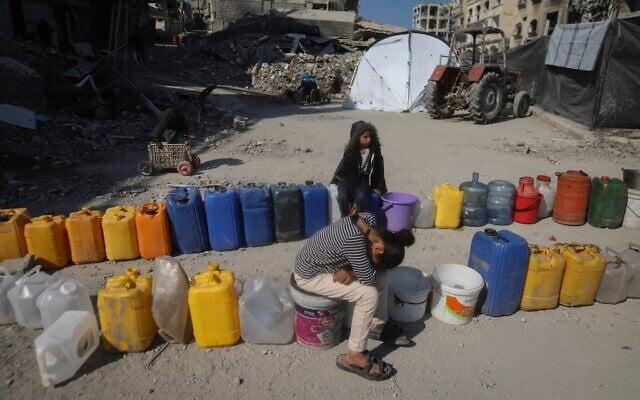
Palestinian children are waiting next to a row of jerrycans to collect water in Beit Lahia, Northern Gaza Strip, January 29, 2025. (Jehad Alshrafi / AP)
Under the agreement, 33 hostages held by Palestinian terrorists in Gaza must be released during the first six weeks of the ceasefire in exchange for more than 1,900 Palestinian prisoners, including hundreds of perpetuity sentences in perpetuity Israel for fatal terrorist attacks.
Seven hostages and 290 prisoners have so far been exchanged. Three other hostages must be exchanged for dozens of Palestinian prisoners on Thursday.
In addition, five Thai hostages will be released Thursday by Hamas, Israeli officials confirmed.
A second stage of the agreement, which should start by February 4, is supposed to pave the way for the release of more than 60 other hostages, including military age, and a complete Israeli military withdrawal from Gaza .
If that successful, A Formal End to the Fighting Could Follow Along With Talks On The Monumental Challenge of Rebucting Gaza, Now Widely Demolized in War That Killed Almost 47,000 Palestinians, According to the Hamas-Run Health Minister, Whose Unverifies Between fighters and civilians.
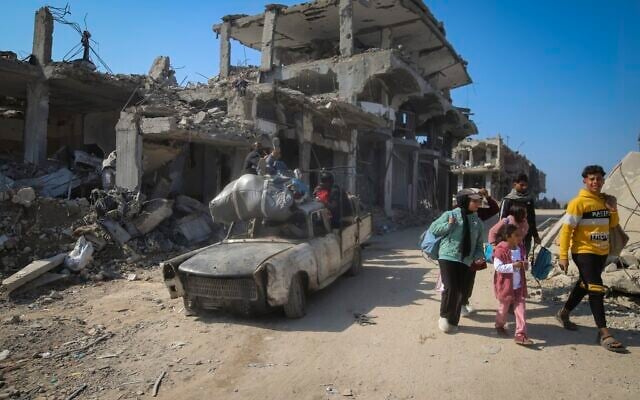
The displaced Palestinians arrive in Beit Lahia, Northern Gaza Strip, January 29, 2025. (Jehad Alshrafi / AP)
In Jabalia, Khamis Amara returned to the ruins of her house to dig for the bodies of her father and brother, among the 10,000 disappeared people and feared died in Gaza, according to the local civil emergency service.
“I was once under the rubble with my father and my brother, just as they are. But I did it, ”said Amara.
“Life here is unbearable. Honestly, everything is a lie. Those in the South should stay there – it’s better for them. »»

